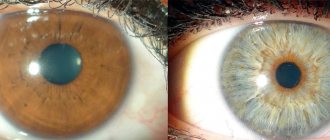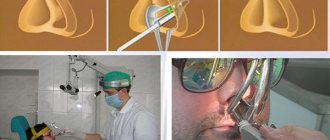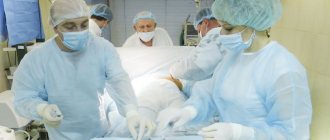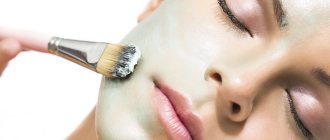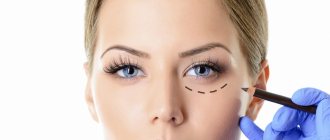You have had heart surgery - either coronary artery stenting, bypass surgery, or both. What does this mean in the grand scheme of things? This means that modern medical technologies have given you a second chance to find a healthy heart, you again have good blood supply to the myocardium, you can again live without heart pain, not be afraid of physical activity, and our goal is to preserve this second chance given to you for a healthy heart!
Despite surgical treatment and improved blood supply to the heart muscle, which should create favorable conditions for the effective restoration of the patients’ quality of life, expectations are not met - their ability to work and social activity continue to remain low. Many experts recognize the insufficient preparedness of outpatient medical institutions for the rehabilitation of cardiovascular patients. According to one of the leading cardiologists in St. Petersburg, after hospitalization such patients often end up in a network of outpatient institutions that are simply not ready to treat them.
If a patient after heart surgery does not take care of his health and does not visit a cardiologist, then a very high percentage of such patients end up on the operating table again after a few years, because heart disease is chronic and requires constant prevention of relapse!
For example, for 2010-2012 cardiovascular mortality among men 35-74 years old in Germany, Great Britain, Sweden, Belgium, Austria, Italy, Denmark and many other European countries was 100-200 people per 100,000 population. In Russia there are more than 1000 people (Circulation, Heart Disease and Stroke Statistics, 2015), which emphasizes the need for rehabilitation and secondary prevention in cardiac patients.
What is rehabilitation and how should it be carried out?
Rehabilitation - “rehabilis” - lat. restoration of ability.
Who is suitable for cardiac rehabilitation?
- patients with myocardial infarction
- after operations CABG, MCS
- after stenting
- after valve replacement
- after surgical treatment of arrhythmias
Rehabilitation after heart surgery is a set of medical and psychological measures aimed at:
- prevention of further development of the disease
- disability prevention
- improving quality of life
- maintaining the patient's ability to work
- returning him to social activity
Rehabilitation assistance is provided:
- regardless of the duration of the disease
- subject to the stability of the patient’s clinical condition
- in the presence of rehabilitation potential, i.e. physical, psychological, social resources of a person that will help him regain strength
- in the absence of contraindications to various techniques
- based on established diagnosis
When is a metal structure installed?
Of course, it may not always help, and this operation is not used in all problematic cases. During a surgical operation, metal is placed on the vertebral bones in case of serious damage.
MRI of the lumbosacral spine
The spinal column may be damaged for the following reasons.
- A person falls from a significant height.
- Road car accident.
- The collapse of something (roof, avalanche, etc.) and a strong blow to the spine.
- Diseases of the spine leading to degenerative-dystrophic consequences.
A person who has undergone spinal surgery to install metal structures must be prepared for the fact that he may be contraindicated in any kind of sports.
Most often the lower back and neck are injured. Moreover, if a person can survive with a lumbar injury, but find himself completely immobilized, then with a cervical injury the most likely outcome is death.
Compliance with the rules of rehabilitation after surgery will allow you to avoid serious complications and restore your ability to work in a timely manner.
The operation carried out to install a metal structure is necessary in the following cases.
- The diameter of the spinal canal is reduced.
- Degenerative changes occurred in the ligamentous apparatus.
- Intervertebral discs are damaged.
- An intervertebral hernia has formed.
Spinal disc protrusion
In all these and a number of other cases, an operation with the installation of stabilizing plates or rod structures becomes necessary. These foreign bodies are designed to immobilize the desired area in order to immobilize it and promote fusion (healing).
Surgery
By the way. The surgical method is used quite widely due to the fact that the period of post-traumatic rehabilitation is significantly reduced, and the patient can almost completely regain a normal lifestyle.
Thanks to the development of medical technology, structural implants for spinal surgeries have a variety of shapes, many sizes and are classified in a certain way.
Vertebral fracture - before and after surgery
Table. Classification of operating structures.
| View | Installation method |
| Solid rod | Attached inside the bone canal |
| Hollow rods | Inside the channel |
| Locking rods | Inside the channel |
| Rods without locking | Inside the channel |
| Staples | Placed on the dice |
| Helical designs | On the bone |
| Plates | On the bone |
Titanium plate in the spine
By the way. After the installation (implantation) of structural devices, the consequences of spinal damage are minimized, and the postoperative recovery procedure is reduced several times in terms of time.
However, the insertion operation is a surgical insertion of increased complexity. And the degree of return of the body’s vital functions largely depends on the quality of the subsequent rehabilitation.
Stages of cardiac rehabilitation
There are three stages of rehabilitation after heart surgery and myocardial infarction:
- Stage I – hospital, where stenting/bypass surgery is performed according to indications
- Stage II – sanatorium-resort treatment
- Stage III – outpatient follow-up of the patient after heart surgery or heart attack
is especially important, since it is the longest in time, and, ultimately, determines the further development of the disease.
And if everything is clear with the first and second stages of rehabilitation - a hospital, where the patient is taken by ambulance, and, if possible, a sanatorium, then the third stage of rehabilitation, outpatient, the most important for maintaining health in the future, remains at the patient’s choice.
At the EXPERT Clinic you will be able to undergo the third stage of rehabilitation under the supervision of experienced specialists. In rehabilitation, a multidisciplinary approach is always used, i.e. interaction of specialists of various profiles, namely:
- cardiologist-rehabilitologist
- neurologist
- psychotherapist
- nutritionist
This provides various types of assistance to overcome the consequences of the disease, change lifestyle, reduce the impact of risk factors; assessment of the need and sufficiency, duration, consistency and effectiveness of the participation of each specialist at each specific point in time during the rehabilitation period.
If necessary, at the EXPERT Clinic you will be advised by a council of doctors of various profiles.
Third (outpatient) stage
The “Third Stage of Cardiac Rehabilitation” program at the EXPERT Clinic includes:
- appointment with a cardiologist
- Patient School – group classes with a cardiologist, which discusses the problems patients face and their solutions
- performing ECG, Echo-CG, 24-hour ECG and blood pressure monitoring according to indications
- general blood test, biochemical blood test (lipidogram, coagulogram, electrolytes, homocysteine, CRP, etc.)
- psychological testing
- consultation with a psychotherapist
- consultation with a neurologist
- nutritionist consultation
- genetic analysis of all cardiac markers, including the risk of sudden death, for the patient and his relatives
- genetic analysis of drug doses in the treatment of cardiovascular diseases
Why do you need a diet after hysterectomy?
Immediately after removal of the uterus, the female body loses one of the most necessary organs to ensure normal functioning, so the first days will be quite difficult. The more manipulations were performed during the operation, the more painful the woman will feel.
To facilitate the body’s task, the patient needs to create favorable conditions, namely not to burden the body with heavy food and a lot of movement. But today we will talk about diet, since it plays a key role.
Immediately after the operation, the most difficult days begin; they should be as gentle as possible for the body. Additionally, there should be a large amount of drinking water to speed up metabolic processes in the body, and it is also recommended to eat only unsalted food.
It is considered a mandatory procedure so that the body does not remain without the amount of water necessary for restoration during this period. A lack of fluid will slow down all processes, weaken the surgical intervention, and the woman will take longer to recover.
Cardiac rehabilitation results
The positive effects of cardiac rehabilitation at the EXPERT Clinic include:
- eliminating risk factors for coronary heart disease and reducing risk in general
- increasing physical activity
- smoking cessation
- normalization of blood pressure numbers
- weight loss
- improvement of lipid profile
- improving carbohydrate metabolism
- improvement of endothelial function
- slowing down the development of atherosclerosis and its clinical consequences
- improvement of psychophysical condition
- mobilization of patients to cooperate in the process of cardiac rehabilitation.
Dynamic (dispensary) observation is the main form of support for patients with chronic diseases in an outpatient setting. And this does not mean monitoring the natural development of the disease, as, unfortunately, often happens, but carrying out a set of secondary prevention and rehabilitation measures!
After surgical treatment, the patient is recommended to visit a cardiologist in the first days after discharge!
During the first year, visits to the doctor should be made every 4 months. Further, it is recommended to visit a cardiologist at least 2 times a year.
The goal of rehabilitation after cardiovascular accidents is to restore the patient’s physical and psychological health. Rehabilitation is indicated for all patients after surgery, regardless of the severity of the condition, both to gain self-confidence and strength, and to minimize the risk of re-exacerbation. Therefore, do not neglect your health and do not allow the disease to develop! Then you will get a chance to extend your life and improve its quality.
Postoperative period
Day after surgery: postoperative period - 1 day
The patient may remain in the intensive care unit or be transferred to a special room with telemetry, where his condition will be monitored using special equipment.
Once fluid balance is restored, the Foley catheter is removed from the bladder. Remote cardiac monitoring is used, drug pain relief and antibiotic therapy are continued. The doctor prescribes dietary nutrition and instructs the patient about physical activity (the patient should begin to sit up on the bed and reach for a chair, gradually increasing the number of attempts).
It is recommended to continue wearing support stockings. Nursing staff are wiping down a patient.
Postoperative period - 2 days
On the second day after surgery, oxygen support is stopped, and breathing exercises continue. The drainage tubes are removed from the chest. The patient's condition is improving, but parameters continue to be monitored using telemetry equipment.
The patient's weight is recorded and the administration of solutions and medications continues. If necessary, the patient continues pain relief, and also follows all the doctor’s prescriptions. The patient continues to receive dietary nutrition and his activity level gradually increases. He is allowed to get up carefully and, with the help of an assistant, move to the bathroom. It is recommended to continue wearing support stockings, and even begin to perform simple physical exercises for the arms and legs.
The patient is advised to take short walks along the corridor. The staff constantly conducts explanatory conversations with the patient about risk factors, instructs how to handle the suture, and talks with the patient about the necessary measures that prepare the patient for discharge.
Postoperative period - 3 days
Monitoring of the patient's condition stops. Weight recording continues. If necessary, continue pain relief. Follow all doctor's orders and breathing exercises. The patient is already allowed to take a shower and increase the number of movements from bed to chair up to 4 times, this time without assistance.
It is also recommended to increase the duration of walks along the corridor and do this several times, remembering to wear special support stockings. The patient continues to receive all the necessary information about dietary nutrition, taking medications, home exercise, full restoration of vital activity and preparation for discharge.
Postoperative period - 4 days
The patient continues to perform breathing exercises several times a day. The patient's weight is checked again. Dietary nutrition is still carried out (restriction of fatty, salty foods), but the food becomes more varied and the portions become larger. You are allowed to use the bathroom and move around without assistance. Assess the patient's physical condition and provide final instructions before discharge. If the patient has any problems or questions, he must resolve them before discharge.
Shortly after surgery, the bandage will be removed from the incision on your chest. The air will promote drying and healing of the postoperative wound. The number and length of incisions in the legs may vary from patient to patient, depending on how many vein grafts were planned to be performed. Some will have incisions on only one leg, some on both, and some may have an incision on their arm. First, the seams will be washed with antiseptic solutions and dressings will be made. Somewhere on the 8-9th day, with successful healing, the sutures will be removed, and the safety electrode will also be removed.
Later, you can gently wash the incision area with soap and water. The patient may have a tendency for the ankles to swell or feel a burning sensation in the area where the veins were taken. This burning sensation will be felt when standing for a long time or at night. Gradually, with the restoration of blood circulation at the sites where the veins are taken, these symptoms will disappear.
The patient will be asked to wear elastic support stockings or bandages, this will improve circulation in the legs and reduce swelling. However, we should not forget that full fusion of the sternum will be achieved in a few months, so you will need to discuss with your doctor the timing of adequate load on the shoulder girdle.
Typically, after bypass surgery, patients spend 14-16 days in the clinic. But the length of stay of a particular patient may vary. As a rule, this is associated with the prevention of concomitant diseases, since this operation will require the patient to spend a lot of effort on the whole body - this can provoke an exacerbation of chronic diseases. There will be a gradual improvement in your general condition and a surge of strength.
Quite often, patients feel fear and confusion upon discharge. Sometimes this is because they are afraid to leave the hospital where they felt safe under the care of experienced doctors. They think that returning home is risky for them. But the patient must remember that the doctor will not discharge him from the clinic until he is sure that his condition has stabilized and that further recovery should take place at home.
A nurse or social worker will help resolve any issues related to discharge. Typically, discharge from the hospital occurs around noon.
AFTER OPERATION
From the above, it follows that CABG surgery is the main step towards returning the patient to normal life. CABG surgery is aimed at treating coronary artery diseases and relieving the patient of pain. However, it cannot completely rid the patient of atherosclerosis.
The most important goal of the operation is to change the patient’s life and improve his condition by minimizing the effect of atherosclerosis on the coronary vessels.
As is known, many factors directly influence the formation of atherosclerotic plaques. And the cause of atherosclerotic changes in the coronary arteries is a combination of several risk factors. Gender, age, heredity are predisposing factors that cannot be changed, but other factors can be changed, controlled and even prevented:
- High blood pressure.
- Smoking.
- High cholesterol levels.
- Overweight.
- Diabetes.
- Low physical activity.
- Stress.
With the help of doctors, you can assess your health and try to start getting rid of bad habits, gradually moving towards a healthy lifestyle.
← Back
FAQ
How long does rehabilitation take after heart surgery?
How long it will take to restore body functions depends on several factors: the severity of the initial condition, age, and motivation of the patient.
However, it is necessary to understand that, in fact, rehabilitation lasts for life, because the whole range of measures is aimed not only at restoring physical and psychological strength, but also at preventing repeated exacerbations of the situation. Without constant prevention, diseases of the cardiovascular system most often worsen.
How to help yourself with heart pain? What medications should you carry with you at all times?
If an attack of angina occurs (pain or burning behind the sternum, shortness of breath during physical and emotional stress, attacks last several minutes), then it is necessary:
- stop physical activity, sit down, calm down
- use nitroglycerin in the form of a spray (Isoket, Nitromint-spray), two or three doses under the tongue
- if the pain does not stop, then after 3-5 minutes you should repeat taking the drug
- If the pain does not go away within 15 minutes, you should chew 1 aspirin tablet with water and call an ambulance.
At what level should blood pressure numbers be maintained?
It is necessary to maintain blood pressure at a level less than 130/80 mmHg. High blood pressure – more than 140/90 mmHg. Art. - indicates the presence of hypertension. More than 180/110 mmHg. Art. indicates severe hypertension.
In order not to lose control of your blood pressure, you must take the medications prescribed by your doctor on time! For this:
- use alarm clock, beep on phone to remind
- Keep the tablets near your toothbrush, razor, or other items you use daily
- Place the tablets in jars indicating the time of administration; for this, you can purchase a special box with compartments at the pharmacy.
What physical activities are possible?
The amount of physical activity can be increased gradually.
6 weeks after surgery , moderate exercise is possible, such as vacuuming, walking the dog, morning exercises, hiking and fishing.
After 3 months, you can increase your activity - swimming, cycling, bowling, tennis, football. Snow removal or gardening at the dacha is allowed.
To maintain good health, moderate-intensity outdoor exercise for 30 minutes 3 times a week is recommended, and those patients who lead a sedentary lifestyle should begin with light exercise programs.
to sexual activity after 9-14 weeks. An exercise test must be performed under the supervision of a physician. If the doctor does not detect any symptoms of overload, then sexual activity is permitted.
How to eat properly if you have heart and vascular diseases?
The main goal of dietary nutrition is to reduce the level of atherogenic lipids in the blood to stop the development of atherosclerosis. Recommended levels of total cholesterol after heart surgery are less than 4.0 mmol/l, LDL - less than 1.8 mmol/l, TG less than 1.7 mmol/l, HDL for women more than 1.2; for men more than 1.0 mmol/l.
It is recommended to eat fruits and vegetables every day, sometimes lean meat, fish, olive and other oils. We allow alcohol in a dose of no more than 2 glasses of red wine per day for men, 1 glass for women. A nutritionist will help you create a detailed nutrition program.
How is the recovery course developed?
The primary rehabilitation program is usually developed by the doctor who monitors the patient in the postoperative period. After discharge it is corrected. Any classes or exercises should be carried out only according to the program prescribed by the doctor. Before this, the patient must be examined, X-rays and MRI results are studied.
There is no standard rehabilitation course for everyone. The program is always compiled strictly individually, for each patient.
In medical centers for rehabilitation, drug and non-drug recovery methods are used. To prevent complications after surgery, anti-inflammatory drugs, antibiotics, and painkillers are prescribed.
The main part of the rehabilitation course is exercise therapy and therapy. The rehabilitator conducts training that begins with simple exercises with a gradual increase in load. The patient moves from simple movements to exercise machines and other sports equipment.
Therapy includes many techniques, the most effective of which are physiotherapy, massage, acupuncture, and reflexology. All this is aimed at relieving muscle tension, accelerating recovery processes, relieving pain, normalizing sleep and preventing complications.
The hip joint is one of the largest supporting joints. When replacing it, the ligaments are removed, the muscles that will hold the endoprosthesis are cut and re-sutured. In order for muscles to cope with their function, they need to be trained and strengthened. Otherwise, the prosthesis may shift, which will lead to bad consequences.
General recommendations for the rehabilitation period
- In a hospital, a person must acquire the skills to move safely and adopt body positions that do not harm the prosthesis. Thus, you should not cross your legs, draw your legs close to your body during sleep, lean on your sore leg, bring your knees together while sitting, or make rotational and flexion movements in the area of the endoprosthesis.
- You cannot bend the hip in the operated joint more than 90°. This poses a risk of dislocation.
- You cannot sit in one position for more than 20 minutes. When sitting, the hip joints should be above the knees or at level. It is not recommended to sit on very soft chairs. The chair should be hard, durable, with a back and armrests, on which you need to stand.
- You need to lie down in bed as follows: sit on the bed, then raise your legs and turn them along with your torso towards the middle of the bed.
- It is better to sleep on your back, and abduct the operated leg 20°, this will relax the muscles.
- To prevent unwanted movements and rotations during sleep, you should place a pillow or bolster between your thighs.
- Analgesics should not be taken during exercise therapy. The patient must adjust in advance to the pain through which all exercises will need to be performed. Otherwise, you may simply not feel when something goes wrong.
- It is not recommended to drive a car in the first 1.5-2 months.
- Do not lift or carry heavy objects.
- In the first weeks after surgery, it is important to prevent falls. You should move very carefully; it is advisable to have someone nearby at these moments to insure you.
Recommendations regarding walking:
- walk slowly, on smooth and non-slip surfaces;
- take steps of equal length, the time of support on a cane or walker is the same for each leg;
- the order of climbing the stairs: before the first step, the legs stand together, then the healthy leg, the operated leg, the support.
- descent down the stairs: support, operated leg, healthy leg.
Rehabilitation methods used in the recovery process
- Drug therapy - antibiotics to prevent infection in the early period, painkillers, anti-inflammatory drugs. After this - vitamin complexes, calcium supplements, immunostimulating drugs.
- Physiotherapy – techniques for improving blood circulation, stimulating metabolic processes, reducing pain and increasing muscle tone.
- Hydrokinesitherapy – water exercises to develop the joint, speed up recovery and reduce the risk of complications.
- Cryotherapy is cold therapy. Special forms filled with hydrogel are cooled and applied to the location of the endoprosthesis for 15 minutes. This relieves pain and relieves swelling.
- Magnetotherapy is a hardware technique for stimulating microcirculation in tissues and accelerating healing.
- Electrical stimulation - tissues are exposed to alternating weak current, due to which the muscles maintain tone even with limited physical activity. Lymph and blood flow improves.
- Laser therapy for anti-inflammatory effect, pain relief and swelling.
- The use of orthoses if the joint needs to be further stabilized. The orthosis (bandage) is selected by an orthopedic traumatologist. This device fixes the joint, relieves it and corrects the function of the leg. The load is redistributed to healthy areas, treatment time is reduced.
- Kinesitherapy is a set of exercises that is selected taking into account the patient’s medical history, condition and a number of other factors. The load gradually increases, using walkers, crutches, and exercise equipment. This technique allows you to restore motor function.
- Exercise therapy, which is best done under the supervision of a trainer. But in the long term, the practiced exercises can be done at home.
- Massage is indicated in the absence of acute pain. It is carried out in order to increase blood flow and saturate tissues with oxygen for better regeneration.
